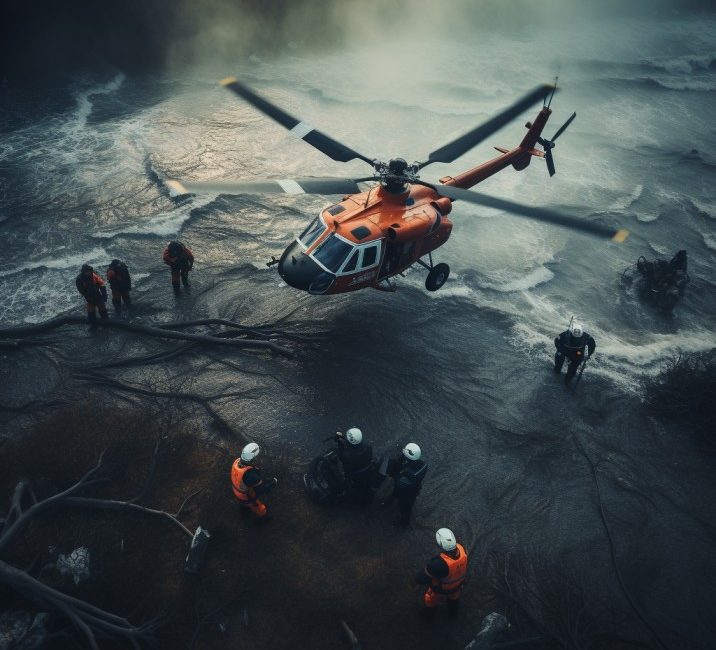When it comes to search and rescue operations, time is of the essence. Lives can be saved or lost in a matter of minutes. Fortunately, drones have emerged as valuable tools for search and rescue teams, providing aerial support and enhancing their capabilities. In this article, we will explore how drones are being utilized in search and rescue operations, the benefits they offer, and the various ways they are saving lives.
1. Rapid Deployment and Aerial Surveillance
Drones can be rapidly deployed to search and rescue sites, providing immediate aerial surveillance. Equipped with high-resolution cameras and thermal imaging technology, drones can quickly cover large areas and provide real-time visual information to rescue teams. This aerial perspective allows rescuers to gain valuable insights into the situation, locate missing individuals or objects, and assess potential hazards or obstacles. The ability to quickly deploy drones and gather crucial information significantly improves search efficiency and saves precious time.
2. Access to Inaccessible Areas
One of the significant advantages of using drones in search and rescue operations is their ability to access areas that are difficult or dangerous for human rescuers. Drones can navigate through dense forests, rugged terrains, or disaster-stricken sites, providing visual data from locations that may be inaccessible or hazardous for ground teams. By reaching areas that would otherwise be challenging to access, drones extend the reach of search and rescue efforts, increasing the chances of locating and rescuing individuals in need.
3. Thermal Imaging and Detection
Thermal imaging technology is a game-changer in search and rescue operations, and drones equipped with thermal cameras are particularly effective in locating missing persons. The heat signatures emitted by individuals can be easily detected by drones, even in low-light or obscured conditions. This capability is invaluable, especially when searching for lost hikers, survivors in disaster zones, or individuals in remote or densely populated areas. Thermal imaging allows search and rescue teams to quickly identify and prioritize targets, resulting in faster and more efficient rescues.
4. Communication and Situational Awareness
Drones provide valuable communication and situational awareness capabilities during search and rescue operations. Live video feeds from drones can be transmitted to the incident command center, allowing decision-makers to have real-time information about the search area. This enhanced situational awareness enables command teams to make informed decisions, allocate resources effectively, and coordinate rescue efforts with a better understanding of the evolving situation on the ground. Drones also facilitate communication between search teams, improving coordination and response times.
5. Post-Disaster Damage Assessment
In the aftermath of natural disasters, drones play a crucial role in damage assessment and recovery operations. They can quickly survey affected areas, capturing high-resolution aerial imagery or videos. This data helps authorities and response teams assess the extent of damage, identify critical infrastructure issues, and prioritize rescue and recovery efforts. Drones provide an efficient and safe means of evaluating the aftermath of disasters, enabling rapid response and effective allocation of resources.
6. Enhanced Safety for Rescuers
Using drones in search and rescue operations enhances the safety of human rescuers. By providing aerial support, drones eliminate the need for rescuers to venture into potentially dangerous or unstable environments. This minimizes the risk of injury or harm to responders, allowing them to focus on critical tasks and increasing their overall effectiveness. Drones act as force multipliers, enabling search and rescue teams to cover more ground and make informed decisions without putting additional lives at risk.
7. Cost-Effective Solution
Drones offer a cost-effective solution for search and rescue operations. Compared to manned aircraft or helicopters, drones are more affordable to acquire and maintain. They require less personnel and resources to operate, reducing overall operational costs. Additionally, drones can be equipped with various sensors and payloads, making them versatile tools that can be utilized in different scenarios. The cost-effectiveness of drones makes them accessible to a wide range of search and rescue organizations, allowing more teams to benefit from their life-saving capabilities.
Conclusion
Drones have transformed search and rescue operations, providing valuable aerial support and enhancing the capabilities of rescue teams. With their rapid deployment, aerial surveillance capabilities, access to inaccessible areas, thermal imaging technology, communication advantages, and post-disaster assessment capabilities, drones have proven to be powerful tools in saving lives. By improving search efficiency, enhancing situational awareness, and increasing the safety of rescuers, drones have become indispensable in search and rescue operations. As technology continues to advance, drones will play an even more significant role in saving lives and making search and rescue efforts more effective and efficient.





